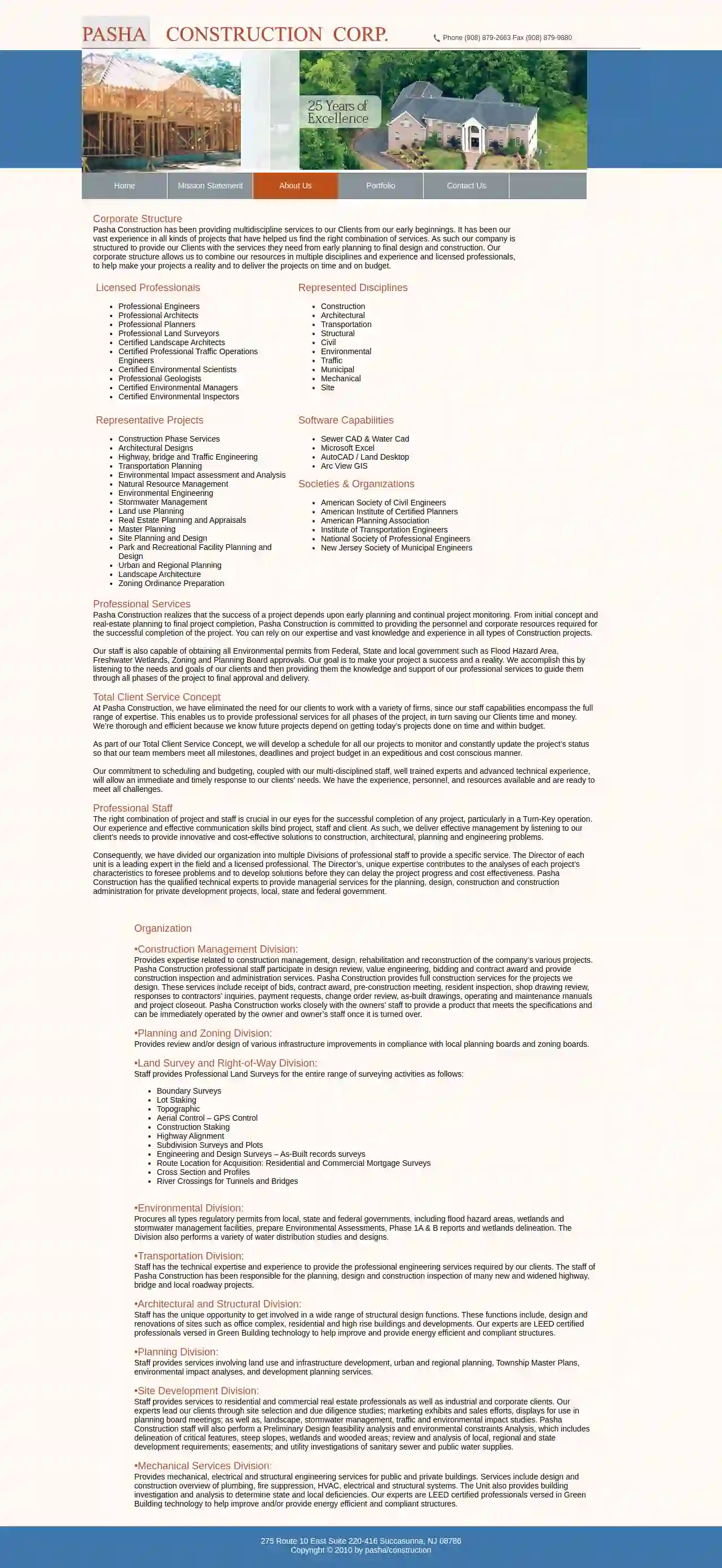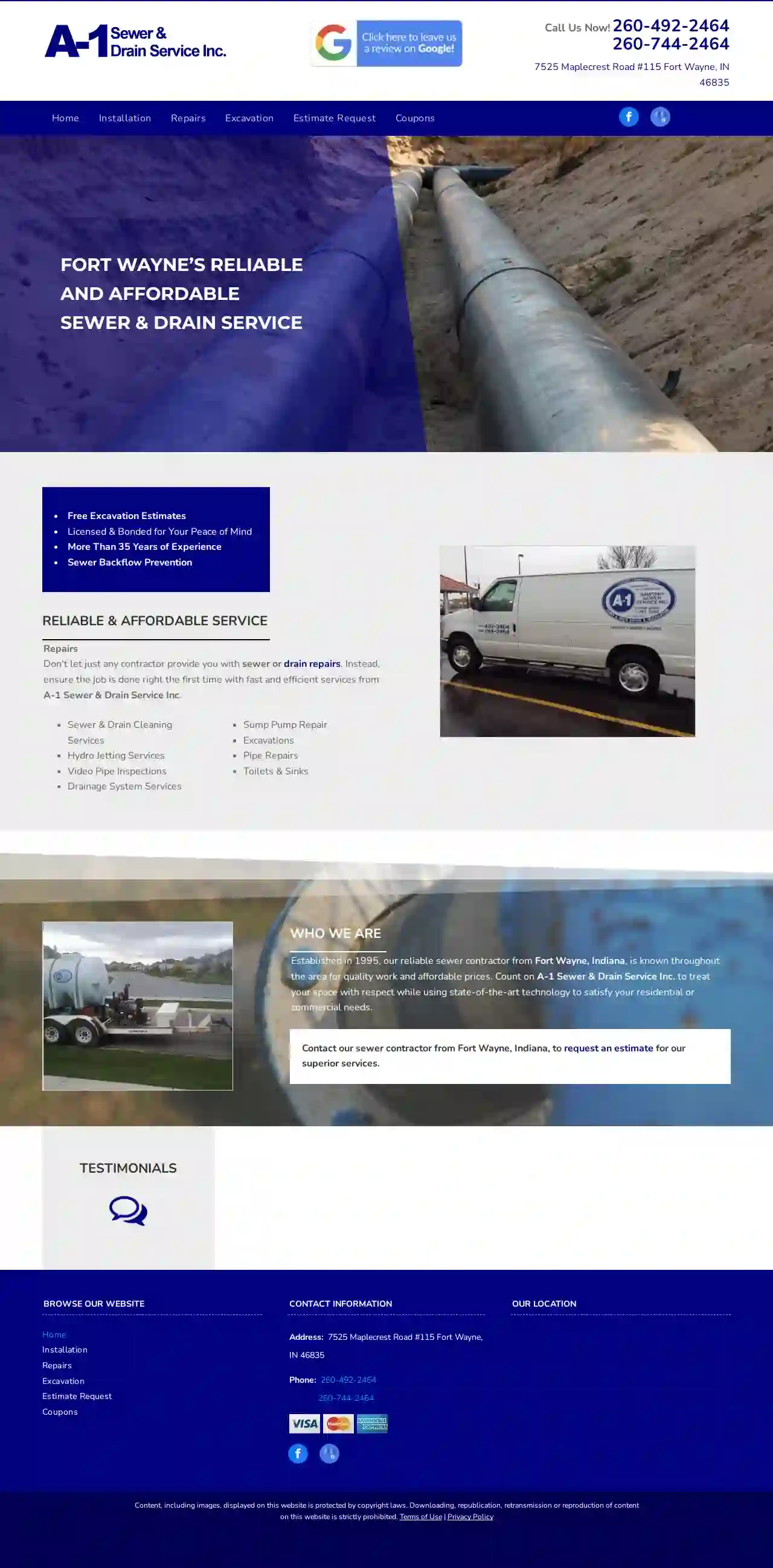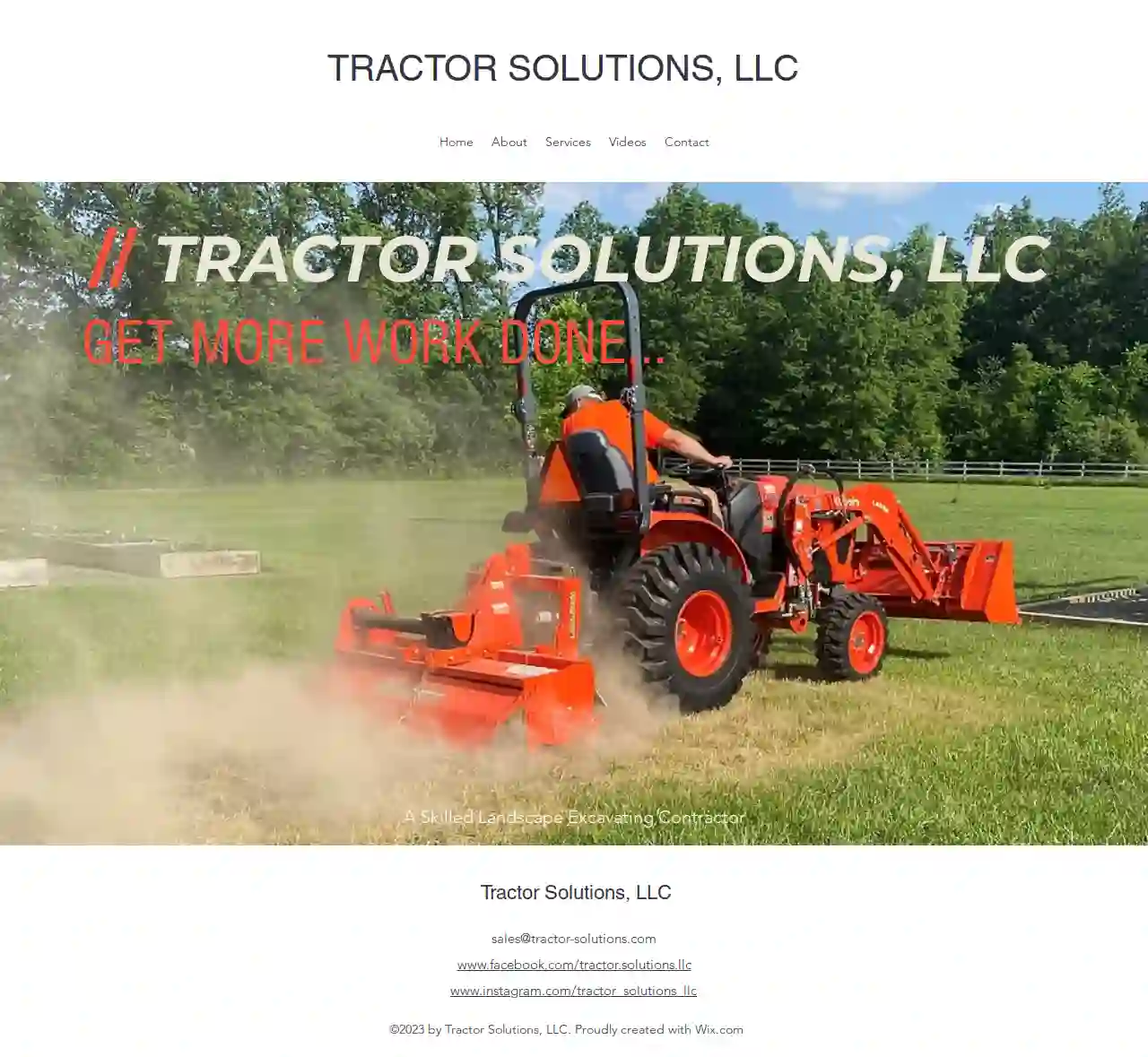Excavation Contractors Cherry Hill Mall
Find the best Excavating Contractor in Cherry Hill Mall
Get up to 3 Excavating Contractors quotes for your project today! Compare profiles, reviews, accreditations, portfolio, etc... and choose the best deal.

Pasha Construction
275 Route 10 East Suite 220-416, Succasunna, 08786, USAbout Us Pasha Construction has been providing multidiscipline services to our Clients from our early beginnings. It has been our vast experience in all kinds of projects that have helped us find the right combination of services. As such our company is structured to provide our Clients with the services they need from early planning to final design and construction. Our corporate structure allows us to combine our resources in multiple disciplines and experience and licensed professionals, to help make your projects a reality and to deliver the projects on time and on budget. Licensed Professionals Professional Engineers Professional Architects Professional Planners Professional Land Surveyors Certified Landscape Architects Certified Professional Traffic Operations Engineers Certified Environmental Scientists Professional Geologists Certified Environmental Managers Certified Environmental Inspectors Represented Disciplines Construction Architectural Transportation Structural Civil Environmental Traffic Municipal Mechanical Site Representative Projects Construction Phase Services Architectural Designs Highway, bridge and Traffic Engineering Transportation Planning Environmental Impact assessment and Analysis Natural Resource Management Environmental Engineering Stormwater Management Land use Planning Real Estate Planning and Appraisals Master Planning Site Planning and Design Park and Recreational Facility Planning and Design Urban and Regional Planning Landscape Architecture Zoning Ordinance Preparation Software Capabilities Sewer CAD & Water Cad Microsoft Excel AutoCAD / Land Desktop Arc View GIS Societies & Organizations American Society of Civil Engineers American Institute of Certified Planners American Planning Association Institute of Transportation Engineers National Society of Professional Engineers New Jersey Society of Municipal Engineers Professional Services Pasha Construction realizes that the success of a project depends upon early planning and continual project monitoring. From initial concept and real-estate planning to final project completion, Pasha Construction is committed to providing the personnel and corporate resources required for the successful completion of the project. You can rely on our expertise and vast knowledge and experience in all types of Construction projects. Our staff is also capable of obtaining all Environmental permits from Federal, State and local government such as Flood Hazard Area, Freshwater Wetlands, Zoning and Planning Board approvals. Our goal is to make your project a success and a reality. We accomplish this by listening to the needs and goals of our clients and then providing them the knowledge and support of our professional services to guide them through all phases of the project to final approval and delivery. Total Client Service Concept At Pasha Construction, we have eliminated the need for our clients to work with a variety of firms, since our staff capabilities encompass the full range of expertise. This enables us to provide professional services for all phases of the project, in turn saving our Clients time and money. We’re thorough and efficient because we know future projects depend on getting today’s projects done on time and within budget. As part of our Total Client Service Concept, we will develop a schedule for all our projects to monitor and constantly update the project’s status so that our team members meet all milestones, deadlines and project budget in an expeditious and cost conscious manner. Our commitment to scheduling and budgeting, coupled with our multi-disciplined staff, well trained experts and advanced technical experience, will allow an immediate and timely response to our clients’ needs. We have the experience, personnel, and resources available and are ready to meet all challenges.
- Services
- Why Us?
- Gallery
Get Quote
Torshel Tornado Shelters & Safe Rooms
53 reviewsBrick, USThe fastest way to get your storm shelter is by selecting the product or products of your interest. Then, proceed to fill out the contact form online, and a sales representative will be in touch with you. The installation time for the above and in-ground units is 1-3 weeks, depending on your location. Commercial building installation time is 3-6 weeks, depending on the size and your location. If you are building a house, make sure that you order your storm shelter ahead of time. Thank you very much, stay safe! Financing Options We’ve Been Protecting Families & Businesses For Over 9 Years Buying a storm shelter is an important decision. Torshel is committed to helping you choose the best type of shelter for both your home and budget. Both underground shelters and safe rooms offer maximum protection for storms. We encourage our clients to compare the quality of our shelters, methods of installation, and the reputation of the companies. There have been a few cases where other companies have poorly installed in-ground shelters that slip out of the ground. As a result, people can be terribly injured, and in some cases, death may occur. Some companies put profit over the lives of those who will use their products. At Torshel we work to make sure that we save and help protect as many lives as possible. We only install the highest quality storm shelters available in the market and stand behind our work by offering a 10-year warranty. We make ourselves available before and after the shelter’s installation. Commercial and Residential Storm Shelters Welcome to Torshel Storm Shelters, a leading company in the storm shelter and safe room industry. We have the best products, at an affordable price. We proudly install and serve Alabama, Arkansas, Florida, Kentucky, Louisiana, Mississippi, Tennessee, Texas, Georgia, and surrounding states. However, we sell, and ship storm shelters anywhere in the United States. We have clients in Dallas, New York, Miami, Seattle, Los Angeles, and many rural areas around the country. Enjoy your visit to our website. Take a look at our videos, pictures, and testimonials from multiple clients. We know this is an important decision. Know that if you chose us, you will get great customer service and a top-of-the-line storm shelter backed by a 10-year warranty. Torshel offers discounts to customers who purchase two or more units. Protect your family with a Torshel shelter manufactured to withstand EF5 category tornadoes. Torshel offers underground storm shelters and above-ground safe rooms of various sizes that meet or exceed FEMA’s stringent safety standards. Our tornado shelters are also more durable than traditional storm cellars. Let your neighbors, coworkers, and friends know about your purchase of your storm shelter. If they want to buy one during the same delivery and installation trip, everyone can save a lot. A case in point, Mr. Kyle told Mr. Will about his new in-ground shelter; Will liked the product and decided to purchase one. Torshel delivered and installed two units, and offered them discounts! John and George partnered installing a big shelter in-between their houses, both saved and both of their families can have direct access to the shelter. Commercial Storm Shelters The most valuable asset of any company is not its facilities, machines or products. It’s their team of employees, executives, and clients. Torshel can help protect them while at work with a commercial multipurpose storm shelter, panic room, and safe vault in the event of a tornado, hurricane, robberies, shootings, and other types of incidents that may put in danger their safety. You, your staff, and clients will have a peace of mind by having a steel safe room ready for any threating occasion. Storm Shelter in your Garage Torshel storm shelters are made of structural heavy-duty steel and are one of the bests available in the United States. Our storm shelters are well constructed and properly anchored. Such units will withstand an EF5 tornado according to engineers and professionals at Texas Tech University. They are the perfect solution for the elderly, people with disabilities, claustrophobia, and clients who want an easy to reach safe room in their garage. Inground Tornado Shelters For clients that live in mobile homes, or do not have a garage, we offer underground outdoor shelters. These underground units reflect Torshel’s latest technology. They come with a 13” x 13” bullet-resistant window made of 1.5” polycarbonate. The window allows natural light to flow inside the shelter. You won’t feel entrapped. Torshel’s Newest and High Technology Feature! 4-6 cubic yards of 3,000 PSI concrete will keep the unit inside the ground and prevent it from floating. Let’s Keep Your Family Safe The sooner the better, fill our online form and one of our talented representatives will contact you to help you with any question you might have.
- Services
- Why Us?
- Testimonials
- Gallery
Get Quote
A-1 Sanitary Sewer & Drain Services
4.778 reviews7525 Maplecrest Road, #115, 7525 Maplecrest Road #115, Fort Wayne, 46835, USFORT WAYNE’S RELIABLE AND AFFORDABLE SEWER & DRAIN SERVICE A-1 Sewer & Drain Service Inc. is a trusted sewer and drain contractor serving Fort Wayne, Indiana. Established in 1995, we have over 35 years of experience providing quality services at affordable prices. We are committed to treating your space with respect and using state-of-the-art technology to meet your residential or commercial needs. We are licensed and bonded for your peace of mind. Contact us today for a free excavation estimate.
- Services
- Why Us?
- Testimonials
- Gallery
Get Quote
The New Mexico Office of Archaeological Studies
4.312 reviews7 Old Cochiti Road, Santa Fe, 87507, USAbout the Office of Archaeological Studies The New Mexico Office of Archaeological Studies (OAS) conducts archaeological research projects throughout New Mexico with a diverse group of 13 archaeologists and support staff. Our mission is to identify, interpret, and share information about prehistoric and historic sites across the state. OAS serves other State agencies and private organizations that require archaeological studies as part of their development projects. In addition, we provide ethnographic and historical research services and have an education outreach program that directly interacts with New Mexicans in order to answer their questions about archaeology, history, and the heritage of New Mexico. That program twice received the Society for American Archaeology’s Excellence in Public Education Award, in 2005 and again in 2012. In addition to client-initiated projects, OAS conducts research projects that are funded by grants and private donations. Many of the projects make use of a dedicated corps of volunteers or involve our many research associates. OAS provides training opportunities for university students and makes use of their skills in the latest technology. We also engage in educational outreach programs in surrounding states. OAS has five specialized laboratories, a research library, and a publications department. Our archaeomagnetic dating laboratory is one of two full-time laboratories in the United States that are dedicated to this dating technique and our low-energy plasma radiocarbon sampling laboratory enables us to nearly non-destructive date fragile archaeological materials. Departmental Overview The New Mexico Office of Archaeological Studies has been providing cultural resource management services throughout New Mexico since 1952. OAS continues to fulfill the Museum of New Mexico’s commitment to the highway archaeology program and has expanded to include a diverse client base. Our list of clients spans the breadth of private and public customers, yet much of the work that we have completed is for return clients. Since 1952 OAS archaeologists have conducted over 800 archaeological projects and produced nearly 1,000 reports. We have worked throughout New Mexico, adjacent states, and northern Mexico, with reports available on projects in all areas.
- Services
- Why Us?
- Gallery
Get Quote
A-Lot Excavating
4.713 reviewsAtlantic City, USA-Lot Excavating & Outdoor Services A-Lot Excavating is a local, family owned and operated business, currently serving South Jersey and surrounding areas. We have experience tackling a range of residential, commercial projects. We are FULLY Registered and Insured! Please get in touch to find out more about our services. Our Services Include Excavation // Grading & Leveling // Land Clearing // Tree- Brush - Stump Removal // Forestry Mulching & Root Raking // Driveway & Parking Lot Millings // Stonework // Demolition // Septic Installation // & Much more... Get a FREE Quote State of the Art Equipment // Affordable Prices // Satisfaction Guaranteed
- Services
- Why Us?
- Testimonials
- Gallery
Get Quote
Nivek Earthworks LLC
58 reviews3831 Nantucket Dr., Fort Wayne, 46815, USAbout Us Nivek Earthworks LLC is a total site development company serving the greater Fort Wayne community and is owned and operated by Kevin Horgan and Jared Shelton. Not only do Jared and Kevin share a lifelong passion for the excavation industry, but they are also extremely passionate about customer service and take pride in going above and beyond for each of their clients. Together, Jared and Kevin have nearly two decades worth of experience in the construction industry, and have developed a strong skillset for moving dirt. They love what they do and are committed to continually producing exceptional excavation services for the members of the Fort Wayne community. Project Highlights “Often Imitated Never Duplicated” Ready to Start Your Next Project? It all begins with an idea. Whether you are a homeowner or a contractor, we would love to meet with you to discuss your next project. We are here to help during the planning stages of your project and can offer our expertise to determine the best approach, create schedules, and identify possible roadblocks that would normally lead to costly extras if discovered during the construction process. We always offer free estimates and include our detailed plan of the work to be completed. Give us a call or email us today to start the planning process on your next project.
- Services
- Why Us?
- Our Team
- Testimonials
- Gallery
Get Quote
Next Level Excavation
54 reviewsEgg Harbor Township, USFamily owned and operated Bring your projects to the Next Level Who we are Doug is the owner and operator of Next Level Excavation. Doug has over 18 years experience in all types of excavation. From small residential projects to large commercial projects we have you covered! Safety is our standard. All employees are O.S.H.A. Certified Fully licensed and insured Over 18 years of experience Services Excavator and skid steer services Brush removal Bulk trash hauling Concrete removal Drainage systems Fence/deck/shed demolition and removal Trenching of any kind Stone driveways Grading Dump trailer rental Material hauling Much more… Prompt and Reliable Satisfaction Guaranteed
- Services
- Why Us?
- Our Team
- Gallery
Get Quote
A-1 Sanitary Sewer & Drain Service
4.127 reviews7525 Maplecrest Road, #115, 7525 Maplecrest Road #115, Fort Wayne, 46835, USFORT WAYNE’S RELIABLE AND AFFORDABLE SEWER & DRAIN SERVICE Don't let just any contractor provide you with sewer or drain repairs. Instead, ensure the job is done right the first time with fast and efficient services from A-1 Sewer & Drain Service Inc. Established in 1995, our reliable sewer contractor from Fort Wayne, Indiana, is known throughout the area for quality work and affordable prices. Count on A-1 Sewer & Drain Service Inc. to treat your space with respect while using state-of-the-art technology to satisfy your residential or commercial needs. Contact our sewer contractor from Fort Wayne, Indiana, to request an estimate for our superior services.
- Services
- Why Us?
- Testimonials
- Gallery
Get Quote
Del Casale Excavating
511 reviews1000 County Route 106, Clifton Park, 12180, USDel Casale Excavating: Your Trusted Partner for Excavation Services Del Casale Excavating is a family-owned and operated business with over 20 years of experience in the excavation industry. We are committed to providing our clients with high-quality, reliable, and affordable services. Our team of experienced professionals is dedicated to exceeding your expectations and delivering exceptional results. We understand that every project is unique, and we take the time to listen to your needs and develop a customized plan that meets your specific requirements. Whether you need site preparation, foundation excavation, utility installation, or any other excavation service, we have the expertise and equipment to handle the job efficiently and effectively. At Del Casale Excavating, we are committed to safety and environmental responsibility. We use the latest technology and equipment to minimize our impact on the environment and ensure the safety of our workers and the public. Contact us today for a free consultation and let us help you bring your project to life.
- Services
- Why Us?
Get Quote
Tractor Solutions, LLC
Wayne, USGet More Work Done... Tractor Solutions, LLC is a skilled landscape excavating contractor dedicated to providing high-quality services and exceeding client expectations. We understand the importance of efficiency and effectiveness in your projects, and we strive to deliver results that meet your specific needs.
- Services
- Why Us?
- Gallery
Get Quote
Over 22,076+ Excavation Pros registered
Our excavation experts operate in Cherry Hill Mall and surroundings!
ExcavationHQ has curated and vetted the Best Excavation Contractors in and around Cherry Hill Mall. Find a top & reliable contractor today.
Frequently Asked Questions About Excavation Contractors
- Project Type and Size: Ensure the contractor has experience handling projects similar to yours in scale and complexity.
- Reputation and Reviews: Check online reviews and testimonials, and request references from previous clients.
- Licensing and Insurance: Verify that the contractor is properly licensed and insured to protect you from liability.
- Equipment and Resources: Confirm that they have the necessary equipment and resources for your project's needs.
- Communication and Transparency: Choose a contractor who communicates clearly, provides detailed estimates, and keeps you informed throughout the project.
- Safety Record: Inquire about their safety protocols and track record to ensure a safe work environment.
- Price: While price is important, it shouldn't be the only deciding factor. Balance affordability with experience, reputation, and quality of service.
- Topsoil Removal: Stripping the fertile topsoil layer from a site, often preserving it for landscaping.
- Trench Excavation: Digging long, narrow trenches for utilities (pipes, cables) or foundations.
- Basement Excavation: Removing earth to create a space for a basement beneath a structure.
- Pool Excavation: Digging a precise hole for installing a swimming pool.
- Roadway Excavation: Removing earth and preparing the ground for road construction.
- Demolition Excavation: Clearing debris and preparing the site after demolition.
- Channel Excavation: Creating channels for drainage or irrigation.
- Clearly Define the Scope: Outline the project's goals, including the excavation area, depth, grade, and intended use.
- Obtain Necessary Permits: Research and acquire any required permits from your local authorities.
- Mark Utility Lines: Contact your utility companies to locate and mark underground utilities to prevent damage.
- Communicate with Neighbors: Inform your neighbors about the project's timeline and potential noise or disruptions.
- Prepare the Site: Clear any obstacles, such as vegetation, furniture, or structures, from the excavation area.
- Discuss Safety Protocols: Review safety procedures with the contractor to ensure a safe work environment.
- Excavators: Versatile machines with a bucket, arm, and rotating cab for digging, lifting, and moving earth.
- Backhoes: Similar to excavators but with a digging bucket on the back and a loader bucket on the front, ideal for trenching and smaller excavations.
- Bulldozers: Powerful machines with a large blade for pushing earth, clearing land, and leveling surfaces.
- Skid Steers: Compact and maneuverable loaders with various attachments (buckets, forks) for digging, loading, and grading in tight spaces.
- Trenchers: Specialized machines for digging narrow trenches for utilities.
- Dump Trucks: Vehicles for hauling excavated material to disposal sites.
How do I choose the right excavation contractor for my project?
What are the different types of excavation?
What should I do before excavation starts?
What equipment is used for excavation?
How do I choose the right excavation contractor for my project?
- Project Type and Size: Ensure the contractor has experience handling projects similar to yours in scale and complexity.
- Reputation and Reviews: Check online reviews and testimonials, and request references from previous clients.
- Licensing and Insurance: Verify that the contractor is properly licensed and insured to protect you from liability.
- Equipment and Resources: Confirm that they have the necessary equipment and resources for your project's needs.
- Communication and Transparency: Choose a contractor who communicates clearly, provides detailed estimates, and keeps you informed throughout the project.
- Safety Record: Inquire about their safety protocols and track record to ensure a safe work environment.
- Price: While price is important, it shouldn't be the only deciding factor. Balance affordability with experience, reputation, and quality of service.
What are the different types of excavation?
- Topsoil Removal: Stripping the fertile topsoil layer from a site, often preserving it for landscaping.
- Trench Excavation: Digging long, narrow trenches for utilities (pipes, cables) or foundations.
- Basement Excavation: Removing earth to create a space for a basement beneath a structure.
- Pool Excavation: Digging a precise hole for installing a swimming pool.
- Roadway Excavation: Removing earth and preparing the ground for road construction.
- Demolition Excavation: Clearing debris and preparing the site after demolition.
- Channel Excavation: Creating channels for drainage or irrigation.
What should I do before excavation starts?
- Clearly Define the Scope: Outline the project's goals, including the excavation area, depth, grade, and intended use.
- Obtain Necessary Permits: Research and acquire any required permits from your local authorities.
- Mark Utility Lines: Contact your utility companies to locate and mark underground utilities to prevent damage.
- Communicate with Neighbors: Inform your neighbors about the project's timeline and potential noise or disruptions.
- Prepare the Site: Clear any obstacles, such as vegetation, furniture, or structures, from the excavation area.
- Discuss Safety Protocols: Review safety procedures with the contractor to ensure a safe work environment.
What equipment is used for excavation?
- Excavators: Versatile machines with a bucket, arm, and rotating cab for digging, lifting, and moving earth.
- Backhoes: Similar to excavators but with a digging bucket on the back and a loader bucket on the front, ideal for trenching and smaller excavations.
- Bulldozers: Powerful machines with a large blade for pushing earth, clearing land, and leveling surfaces.
- Skid Steers: Compact and maneuverable loaders with various attachments (buckets, forks) for digging, loading, and grading in tight spaces.
- Trenchers: Specialized machines for digging narrow trenches for utilities.
- Dump Trucks: Vehicles for hauling excavated material to disposal sites.